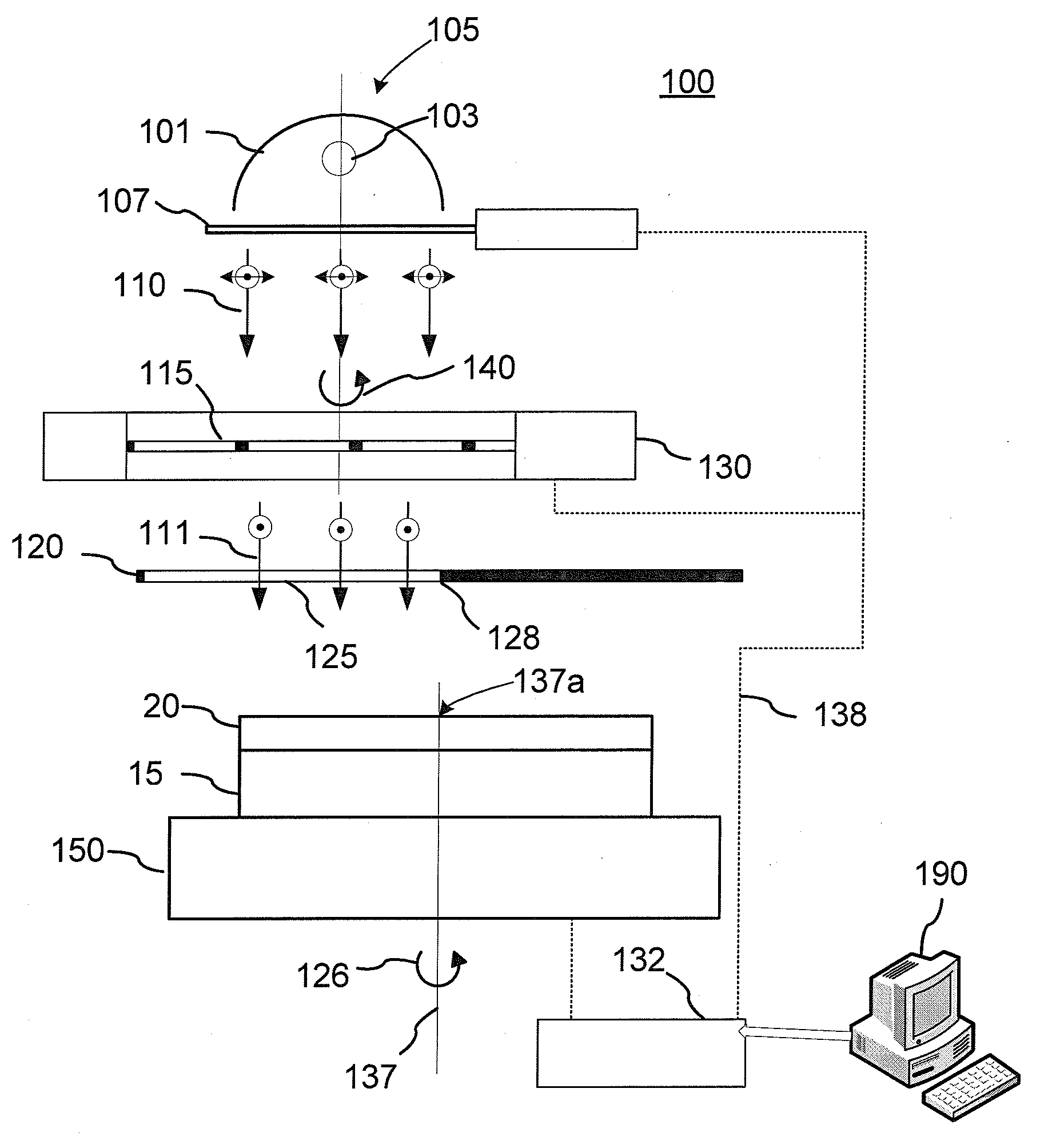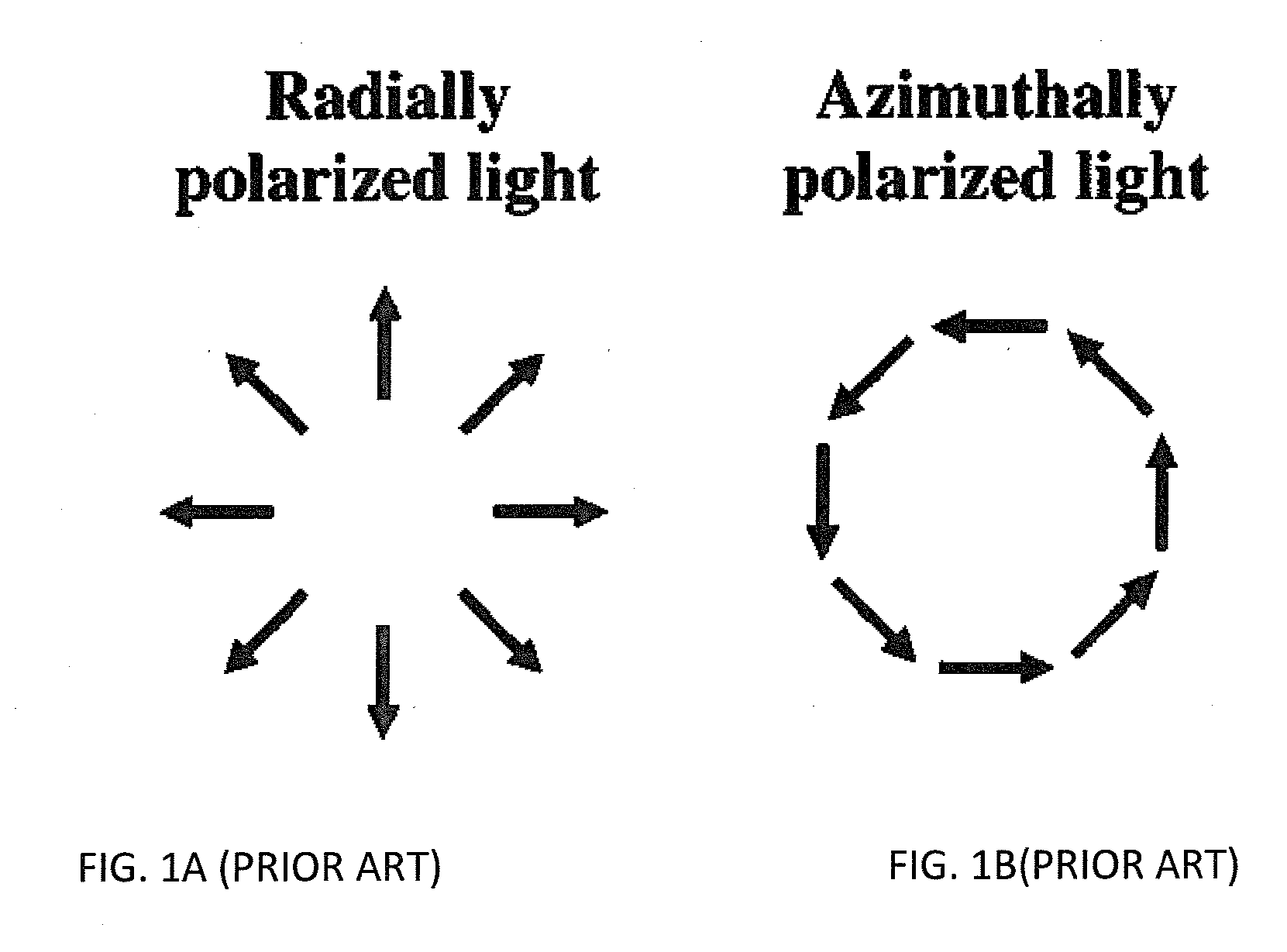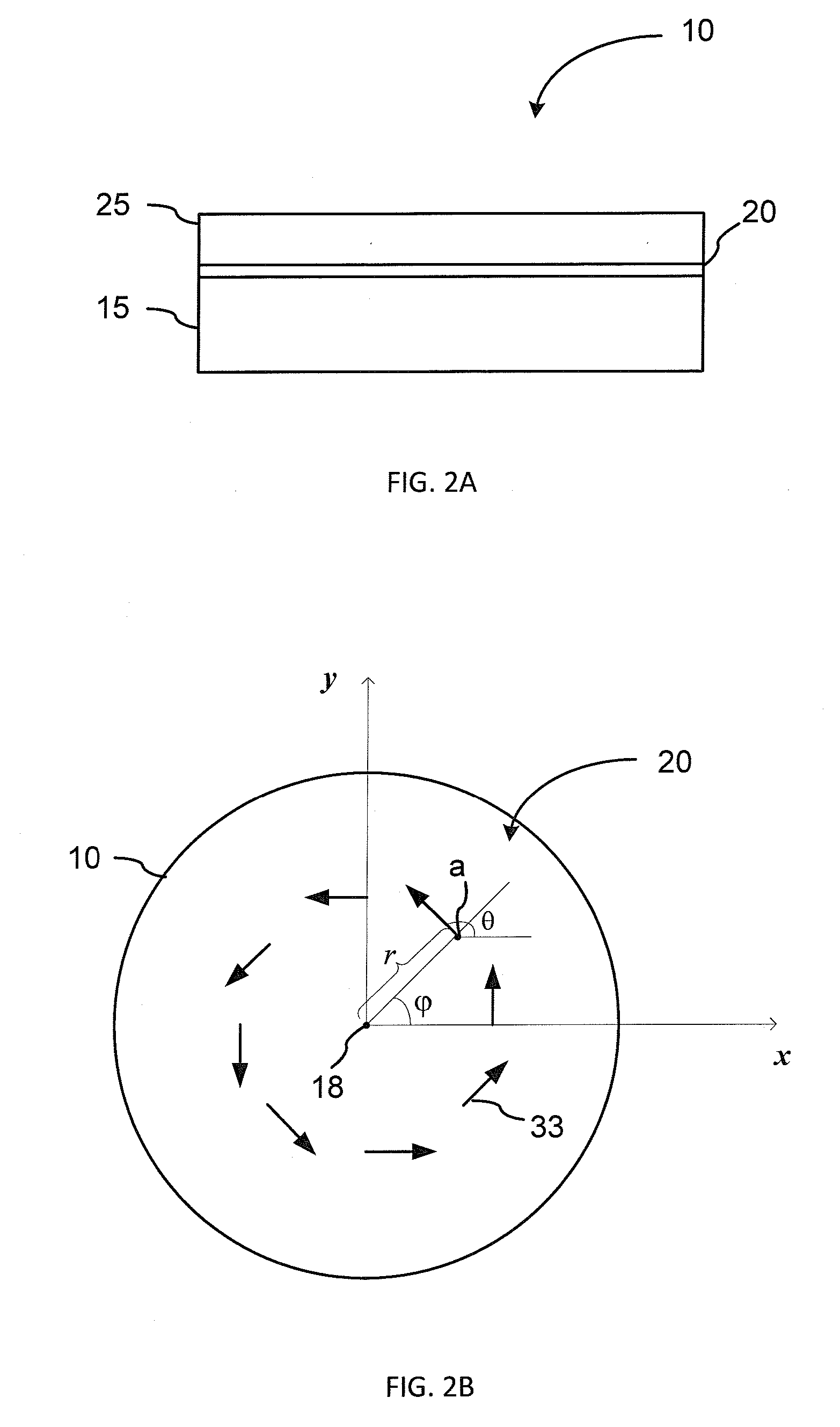Space-Variant Liquid Crystal Waveplate
a liquid crystal wave plate and space-variant technology, applied in the field of wave plates, can solve the problems of significant limitations in the application of gratings with sub-wavelength features in the visible in near-infrared wavelength range, and the inability to generate vortex beams of the polarization vortex order greater than m=2
- Summary
- Abstract
- Description
- Claims
- Application Information
AI Technical Summary
Benefits of technology
Problems solved by technology
Method used
Image
Examples
Embodiment Construction
[0041]Turning first to FIG. 2A, the invention provides an apparatus and method for fabricating a space-variant photo-aligned LC (SVLC) waveplate 10 that is capable of forming a polarization vortex beam of substantially any pre-defined vortex order m. In the embodiment illustrated in FIG. 2A the SVLC waveplate 10 utilizes an LC layer 25 of an LC material such as a liquid crystal polymer (LCP), which is disposed on an alignment layer 20 of a photo-alignable material, such as a linear photopolymerizable polymer (LPP), which is in turn disposed on a planar substrate 15. An example of an LPP is polyvinyl 4-methoxy-cinnamate (“PVMC”). A molecular orientation of the LPP is set by exposure to linearly polarized ultraviolet (LPUV) light to form an LC alignment pattern of the LC material that results in a desired spatial pattern of the optic axis (OA) of the waveplate layer 25. In the context of this specification, the words “spatial pattern of the optic axis” or “spatial OA pattern” are used...
PUM
| Property | Measurement | Unit |
|---|---|---|
| wavelength | aaaaa | aaaaa |
| angular velocities | aaaaa | aaaaa |
| wavelength range | aaaaa | aaaaa |
Abstract
Description
Claims
Application Information
 Login to View More
Login to View More - R&D
- Intellectual Property
- Life Sciences
- Materials
- Tech Scout
- Unparalleled Data Quality
- Higher Quality Content
- 60% Fewer Hallucinations
Browse by: Latest US Patents, China's latest patents, Technical Efficacy Thesaurus, Application Domain, Technology Topic, Popular Technical Reports.
© 2025 PatSnap. All rights reserved.Legal|Privacy policy|Modern Slavery Act Transparency Statement|Sitemap|About US| Contact US: help@patsnap.com



